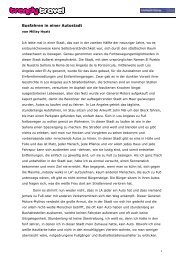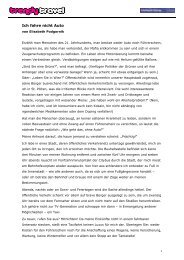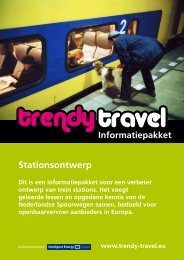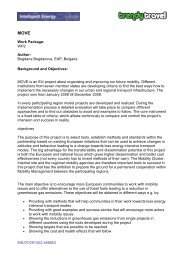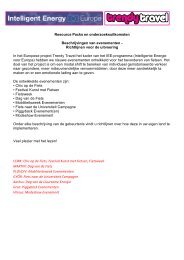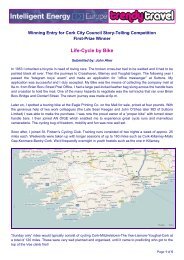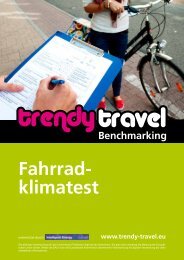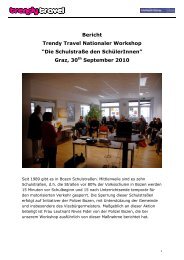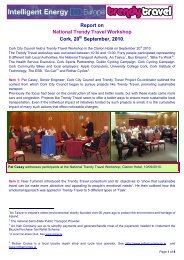Resource Pack: Railway Station Design - Eltis
Resource Pack: Railway Station Design - Eltis
Resource Pack: Railway Station Design - Eltis
You also want an ePaper? Increase the reach of your titles
YUMPU automatically turns print PDFs into web optimized ePapers that Google loves.
more slowly than in a red one. One explanation might be that passengers who feel<br />
stressed not only desire cooler colours but also pay more attention to the time, which<br />
makes it seem to pass more slowly (Zakay, 1989). From the second experiment it<br />
appeared that the perception of waiting time closely approaches the basic emotions as<br />
defined by Mehrabian and Russel (1974). These researchers state that the three<br />
emotions ‘pleasure’, ‘arousal’ and ‘dominance’ can adequately measure ‘a large<br />
variety of emotional states’ (Mehrabian & Russel, 1974). In the case of the station<br />
environment, feelings or emotions evoked by the waiting time can be added to these<br />
basic emotions.<br />
The results show that manipulations in a virtual retail<br />
environment successfully allow effects with colour, light,<br />
crowding and time pressure to be demonstrated. These<br />
findings offer an initial insight into the way colour and light<br />
work in a station. However, both experiments were<br />
conducted in a virtual station, which might influence the<br />
outcome. The question arises whether these findings would<br />
also be found in a real station. The disadvantages of a<br />
virtual environment, such as navigating through the space<br />
with a mouse and projecting oneself into a scenario, would<br />
thus be prevented. Further research in a real-life situation in which colours and light<br />
are manipulated can hence verify the findings.<br />
21<br />
EIE/07/291/SI2.466803



